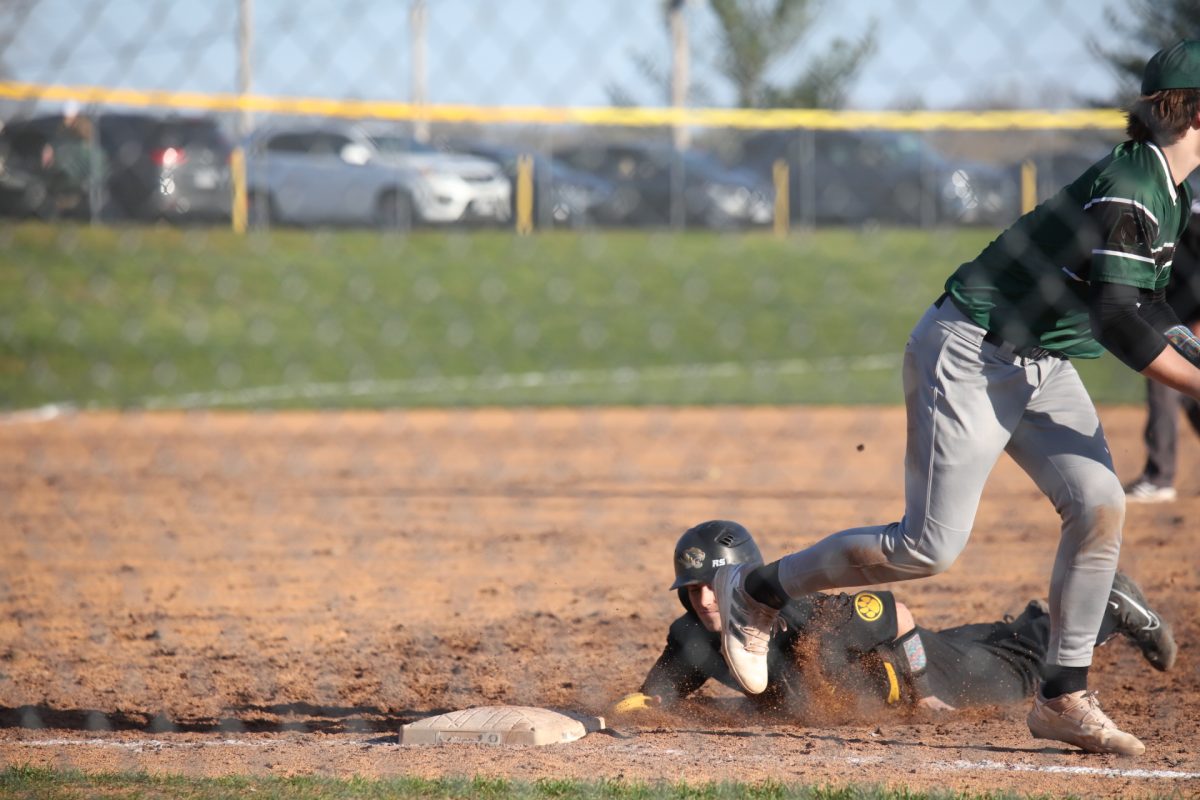Staff Report
A request for additional funding for work related to the construction of the Lower Meramec Wastewater Treatment Plant in Oakville is scheduled to be considered today — Feb. 10 — by the Metropolitan St. Louis Sewer District Board of Trustees.
The Board of Trustees will meet at 5 p.m. at the district’s headquarters, 2350 Market St., St. Louis.
The Lower Meramec Wastewater Treat-ment Plan, being constructed near Rogers Elementary School, will clean wastewater before discharging it into the Mississippi River. It will replace the Meramec and Baumgartner lagoons and eventually the Grand Glaize and Fenton treatment plants.
The district is under an administrative order from the Missouri Department of Natural Resources to eliminate the Baum-gartner Lagoon by December 2006 or pay up to $10,000 per day in penalties. The Mer-amec and Baumgartner lagoons will remain operational until the new plant is ready.
A nearly four-mile-long tunnel that will carry wastewater from the Baumgartner Lagoon to the new treatment plant is being constructed roughly 200 feet underground.
The current cost of the treatment plant and related work is estimated at $217 million. Of that $217 million, roughly $51.5 million, including design and construction costs, is being spent to construct the underground tunnel. During fiscal 2004, the MSD board appropriated $33.7 million for construction of the tunnel.
District staff had planned to request a supplemental appropriation of $14.3 million this year for the tunnel construction.
However, because of unanticipated flooding problems involving two shafts, the tunnel and some additional work, that supplemental appropriation request, scheduled to be presented today to the board, will in-crease by $3,465,000 to $17,765,000, said Brian Hoelscher, MSD director of engineering. One shaft affected by the flooding was a bar screen shaft that collects debris and a lift station shaft that pumps sewage from the tunnel to the treatment plant.
While the cost to contain the underground flooding and the additional work is estimated at $5,745,000, $2,280,000 will come from the tunnel project’s original contingency. The additional costs include:
$495,000 to eliminate flooding at the bar screen shaft and the lift station shift. The contractor for the tunnel project is Baum-gartner Joint Venture, which is comprised of Frontier-Kemper of Evansville, Ind., and Gunther-Nash of Creve Coeur, a subsidiary of Alberici Constructors Inc. Under the terms of the contract with Baumgartner Joint Venture, the contractor paid an additional $225,000 to eliminate this flooding, Hoelscher said, noting that no other shafts are affected by the flooding.
$2.5 million for a tunnel grouting program that will eliminate the flooding of the underground tunnel.
$1.75 million for additional shaft work allowing the city of Arnold to pump wastewater to the tunnel and the treatment plant. The MSD will pay the construction costs and bill Arnold over a 20-year period for the work, according to Hoelscher.
$1 million for an additional contingency.
MSD voters last year approved a bond issue that will help fund $3.7 billion worth of sewer system improvements over the next 18 years. The first phase of improvements will cost $647 million over a three-year period.
Voters agreed in February 2004 to pay $500 million of that through the bond issue. Those funds are exclusively reserved for the first phase of the project. The additional $147 million will be paid through a rate increase that was effective last year.
The flooding first occurred at the two shafts when workers encountered a seam containing water between two types of rock formations, Hoelscher told the Call during a recent interview. After eliminating the flooding at the shafts, he said, “… The question became: ‘Are we going to run into it later?’ A horizontal feature like this going across a horizontal tunnel sounds dangerous, obviously. It doesn’t just cross, it kind of stays with you a very long time.”
District staff then reviewed the original borings and conducted four more borings to try to identify the location of the seam.
Based primarily on the new borings, Hoelscher said, “We saw two new things. One, on the tunnel, we had anticipated no more than 2,000 gallons per minute coming in the tunnel and that was primarily because there will be vertical seams … and we have a method for taking care of that issue by just tunneling. We pull out ahead of ourselves and close those holes up. This, though, it looked like this flow could be anywhere probably between 2,000 and 6,000 gallons per minute, possibly as high as 15,000 gallons per minute — a lot more flow.
“In addition, they detected, there were indications of H2S in the groundwater, hydrogen sulfide. That causes two problems. One, discharging those flows onto the surface and onto the river could be … a water quality issue and also if that gas comes out of solution and gets into the tunnel, it causes a toxic atmosphere in the working environment,” he said.
“We indicated to the contractor what we saw out here and we asked him, is there a way that you can propose to go ahead and close this off? So what we did is we went ahead and got a proposal from the contractor, which was verified by both our designer and contract manager,” Hoelscher said, noting that the review of the contractor’s proposal determined it was “a standard method for addressing this issue and it should resolve the problem.”
After determining the area in which the groundwater intrusion was most likely to occur, Hoelscher said, “… All we had here were subterranean rights because all we were doing was tunneling, got with the property owners, got surface rights and started mobilizing an access road through some of these areas.”
In mid-January, “the grouting contractor mobilized to go in here and start doing the grouting operation. And what we’re going to do is similar to what we did around the shafts …,” he said, noting that holes will be drilled about 16 feet apart, with the spacing staggered. “So every 16 feet then, we will drill another hole and we will push grout in to the appropriate elevation wherever
(See TUNNEL, Page 6A)
the hole happened to be wherever we found that seam. The idea being then that we put this collar, a water-tight collar all the way around the tunnel and prevent the water from going in. It helps us avoid some very, very expensive potential costs if we run into this and we do so things the contractor can’t handle. Then it either becomes a toxic atmosphere issue or you just have to stop production because you’ve got to take care of it. The other thing is there are other ways to stop this potentially, but the cost to stop a leak like this with running water is much more difficult and much more expensive than if you can get in here and pregrout it while the water’s not moving.”









